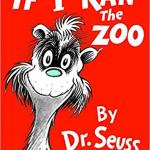Dr. Seuss “Cancelled”? There’s Nothing New About Cutting Racism From Children’s Books

In the week after the Dr Seuss estate announced it would cease publication of six of his titles due to racist tropes, some conservative talking heads have been quick to label Seuss as the latest victim of “cancel culture”. But over the decades, many beloved children’s books have been quietly updated to remove racist content: some people will have never read their childhood favourites in their original form, because they were updated long before modern audiences saw them.
The Hardy Boys and Nancy Drew series, which debuted in 1927 and 1930 respectively, were originally packed with unflattering portraits of ethnic villains, who were “swarthy”, “hook-nosed”, or “dark, and rather stupid looking”. In The Hardy Boys’ Hidden Harbor Mystery, the criminal exploits are executed by Luke Jones, a Black man who wears stolen diamond rings, speaks in a heavy dialect and refers to himself in the second person: “Luke Jones don’t stand for no nonsense from white folks! Ah pays mah fare, an’ Ah puts mah shoes where Ah please.” Meanwhile, Nancy Drew solved The Mystery at Lilac Inn by means of racial profiling: spotting a “dark-complexioned” girl at an upscale dress shop, Nancy notes: “Surely a girl in her circumstances cannot afford to buy dresses at such a place as this.”
Publishers Grosset & Dunlap did more than just change “chums” to “friends” and give Nancy Drew a convertible and Joe Hardy an electric guitar when they updated the books in 1959. Gone are the dialects and the people who spoke them, as the characters were changed to white, or eliminated altogether. In the case of The Hidden Harbor Mystery, the entire plot was rewritten, as the cartoonish Luke Jones was so inextricably tied to it. As a result, the books became more homogeneous. As Andrea Ruggirello wrote of Nancy Drew on Electric Lit: “River Heights became less overtly racist but also more white.”
Anyone who read Roald Dahl’s Charlie and the Chocolate Factory after 1973 knows the Oompa-Loompas as “rosy-white” and hailing from the fictitious Loompaland. Pick up a first edition from 1964 and you’ll find that the Oompa-Loompas are pygmies from “the deepest heart of Africa”, depicted in illustrations as coal-black people with broad grins. Originally, the Oompa-Loompas were brought to work as slaves by Willy Wonka, who smuggled them to the UK on a ship, packed in cases with air holes. That they are not fanciful creatures from an imaginary land but actual Africans, makes it all the more disturbing when Veruca Salt demands that her father buy her one. (“I’ll see that you have one before the day is out,” he replies.) After complaints from the NAACP, Dahl made the revisions himself.
Hugh Lofting’s The Story of Dr Dolittle won the prestigious Newbery medal in 1923, but was allowed to go out of print in the 1970s in the US due to its racist tropes and slurs. Prince Bumpo, an African native who wishes to be white, was decried in a 1968 paper from the National Council of Teachers of English as “one of the cruellest stereotypes in the realm of children’s literature”. The book was extensively revised in 1988 (Bumpo now wishes to be a tiger), and the unexpurgated edition is rare. Mary Poppins was similarly revised in 1981, this time by author PL Travers herself, who was upset to find that some teachers were uncomfortable reading a passage about a “negro lady” holding a “tiny black piccaninny” in front of Black students. Travers completely reworked a chapter in which the children travel around the globe, replacing all of the people with animals.
Plenty of authors and publishers have updated their books over the years without fanfare. Seuss himself made changes to his books during his lifetime. Such work can be a factor in why some books stay in print and their authors relevant, while others disappear completely. (Both The Hardy Boys and Nancy Drew have never been out of print.) While adults have differing opinions about what should be done about books with objectionable content, the fact remains that, throughout time, what is considered acceptable for children has changed. We don’t still tell children the version of Cinderella where the stepsisters maim their feet, or of a Sleeping Beauty who is impregnated in her sleep. Changing stories to reflect current views is, in fact, part of our history.
